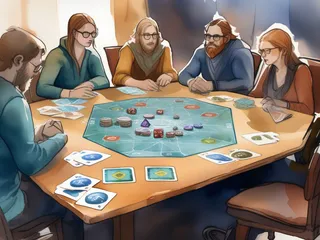The best Scrum Masters I've worked with share one defining trait: they're genuinely curious about everything. Not the kind of curiosity that leads to micromanaging or endless questioning, but the type that drives continuous learning, problem-solving, and team growth. They ask "why" when processes break down, "what if" when exploring solutions, and "how might we" when facilitating team discussions.
Why Curiosity Matters More Than Certification
You can memorize every ceremony, artifact, and role in the Scrum framework, but without curiosity, you're just a meeting facilitator with fancy vocabulary. Curiosity transforms a Scrum Master from someone who follows the playbook to someone who adapts it intelligently.
Here's what I've observed: curious Scrum Masters consistently:
- Dig deeper into impediments rather than accepting surface-level explanations
- Question assumptions that might be limiting team performance
- Explore new techniques for retrospectives, planning, and team dynamics
- Seek to understand individual team member motivations and working styles
The Curiosity Playbook in Action
1. Impediment Investigation
When a developer says "the build is slow," a checkbox Scrum Master logs it and moves on. A curious one asks:
- How slow is slow? What's the baseline?
- When did this start happening?
- Which parts of the build are taking the longest?
- What have you tried already?
- How is this affecting your daily work?
This isn't interrogation—it's genuine interest in understanding the full context so you can facilitate better solutions.
2. Team Dynamics Exploration
During retrospectives, curious Scrum Masters notice patterns others miss:
- Why does Sarah always defer to Mike during planning?
- What's behind the sudden drop in story point velocity?
- How come certain types of stories consistently get pushed to the next sprint?
They create safe spaces for these conversations because they're genuinely interested in team health, not just sprint metrics.
3. Process Optimization
A curious Scrum Master doesn't just run standups—they wonder:
- Are we getting value from this format?
- What would happen if we tried asynchronous updates on Mondays?
- How might we make planning more collaborative?
- What's the real purpose of this ceremony for our specific team?
Practical Curiosity Techniques
The "Tell Me More" Approach
Instead of jumping to solutions, use phrases like:
- "That's interesting—tell me more about that"
- "Help me understand what you mean by..."
- "What would success look like for you?"
Question Laddering
When someone brings up an issue:
- Start with the immediate problem
- Ask "What's causing that?"
- Then "What's behind that cause?"
- Continue until you hit the real root
Assumption Mapping
During planning or retrospectives, call out assumptions:
- "I'm hearing that we assume X—is that accurate?"
- "What if that assumption isn't true?"
- "How might we test that assumption?"
The Balance: Curiosity vs. Boundaries
Here's where it gets tricky—curiosity without boundaries becomes invasive. Great Scrum Masters:
| Are curious about | But they respect boundaries around |
|---|---|
| ✅ Process effectiveness | ❌ Personal issues unrelated to work |
| ✅ Team dynamics that affect delivery | ❌ Technical implementation details (unless they're impediments) |
| ✅ Impediments and their root causes | ❌ Individual performance (that's for managers) |
| ✅ Learning opportunities | ❌ Decisions outside the team's control |
Developing Your Curiosity Muscle
1. Practice Active Listening
Next time someone mentions a challenge, resist the urge to offer immediate solutions. Instead, ask three follow-up questions before suggesting anything. Look at Effective Listening for Scrum Masters for some techniques!
2. Embrace "I Don't Know"
When team members ask technical questions outside your expertise, say "I don't know, but I'm curious to learn—can you walk me through it?" This models learning behavior and builds trust.
3. Question Your Own Assumptions
Before each ceremony, ask yourself:
- What assumptions am I making about this team?
- What patterns am I expecting to see?
- How might I be wrong?
4. Experiment with Facilitation
Try new retrospective formats, planning techniques, or team-building approaches. Be curious about what works and what doesn't—then iterate.
Key Takeaways
- Curiosity transforms Scrum Masters from process enforcers to team enablers
- Ask "why," "what if," and "how might we" questions to unlock deeper insights
- Balance genuine interest with respect for boundaries
- Model learning behavior to create psychologically safe teams
- Use curiosity to improve processes, not to micromanage people
The Curious Advantage
Teams led by curious Scrum Masters consistently outperform those with rigid, by-the-book facilitators. They innovate more, communicate better, and adapt faster to change. Why? Because curiosity is contagious—when you model genuine interest in continuous improvement, your team follows suit.
The next time you catch yourself going through the motions of a ceremony, pause and ask: "What could I be curious about right now?" Your team will thank you for it.





